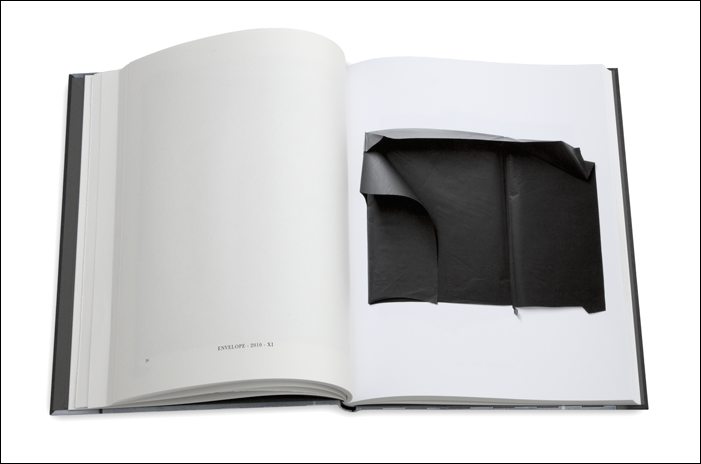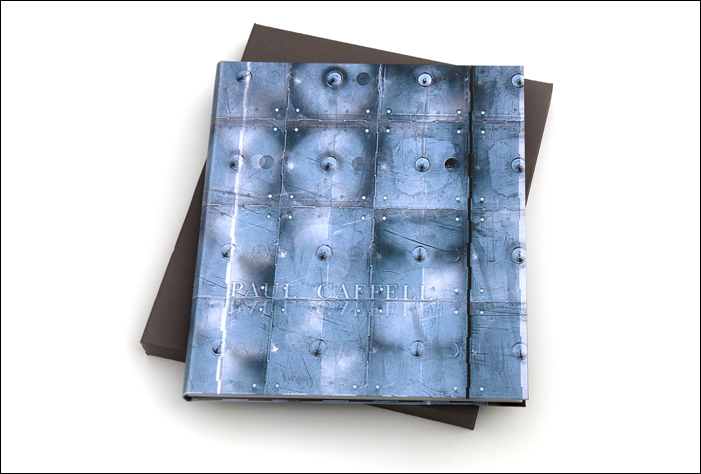


Texts by Kirstie Skinner, Simone Menegoi, John Snjiders and Chris Townsend.
Edition of 30, signed and numbered by the artist.
Each copy contains one unique platinum print.
Price £500
ISBN 9780954735234
There is a longstanding bond between sculpture and photography. And there is a more recent but equally close bond between photography and the readymade. Both of these, sculpture and readymade, play a role in Caffell’s prints of crumpled paper envelopes.
The origins of the affair between photography and sculpture are technical and aesthetic in nature. At the dawn of the medium, practical issues (the long posing times, for a start) were above all what made sculpture a favorite subject for photographers. Soon, however, the latter realized that the infinite possibilities of varying the angle, framing and lighting made photography a natural ally of sculpture. To illustrate the potential that lay in wedding the two languages, Fox Talbot’s The Pencil of Nature included two pictures, completely different from each other in angle and expressive effect, of a Greek bust. From then on, photography rapidly rose out of its ancillary position in regard to sculpture. By the end of the nineteenth century, it was a dialogue between equals. With darkroom alchemists like Medardo Rosso and Edward Steichen, photography began to fully re-
And so we come to photography’s other affair, with the readymade. There is a deep aesthetic affinity between the two that Tobia Bezzola has summarized as follows: “Duchamp’s concept of the readymade might itself have arisen out of a speculation as to how photography could open up the world, for it translates into the third dimension a principle that photographers had long used to challenge painting: selection rather than creation” 1. “Selection rather than creation”: this is indeed the motto of the readymade, as a form that the artist does not produce, but simply discovers and presents to the viewer’s gaze; choosing an object, or the angle from which to photograph it.
When Paul Caffell began taking pictures of the paper envelopes that piled up in his studio, he placed himself at the confluence of these two traditions: the practice of photography creating sculpture through an act of selection, a sampling of reality, and the practice of photography interpreting sculpture by reformulating its image. From the first, he has preserved the preference for random objects devoid of value, without manipulating them in any way; from the second, the quest for an exquisitely refined image. Ordinary paper envelopes become austere modernist sculptures, bas-
Simone Menegoi
1. Tobia Bezzola, “From Sculpture in Photography to Photography as Plastic Art”, in The Original Copy,
Photography of Sculpture from 1839 to Today, Museum of Modern Art, New York, 2010, p. 31.
Platinums
2014
| EXHIBITIONS |
| PUBLICATIONS |
| LINKS |